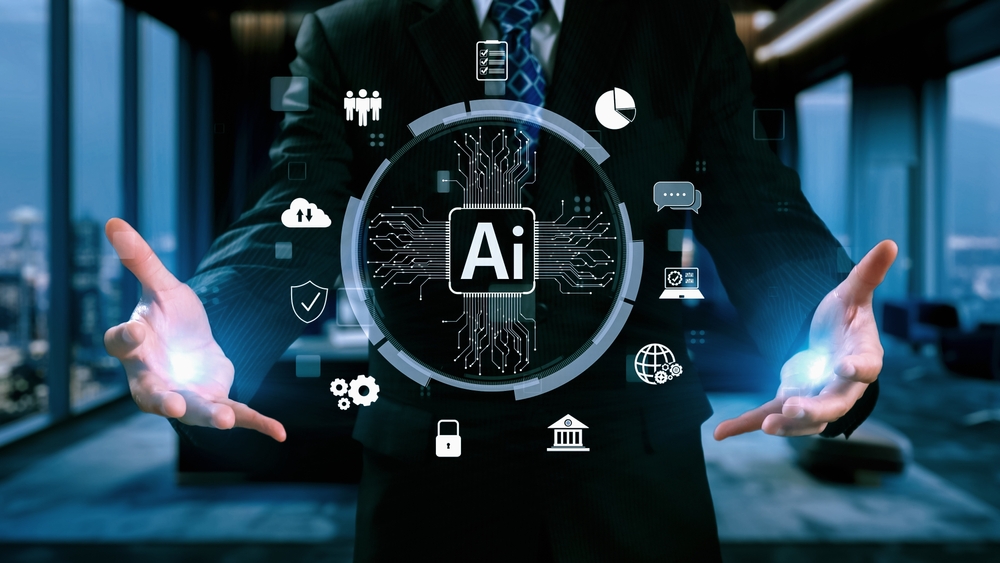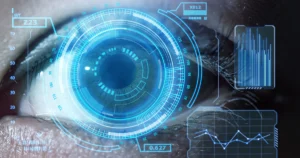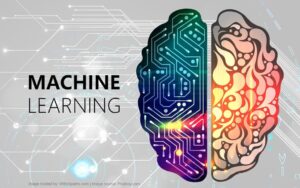Artificial Intelligence (AI), also known as AI, has been one of the most revolutionary technologies of our time. Artificial intelligence is the ability of computers and machines to perform tasks normally performed by humans. The tasks that AI can perform include understanding language and patterns, solving problems, making decisions, etc. AI is not a new concept. However, rapid advances in computing power and data availability have transformed it into a part of our everyday lives. AI is increasingly ingrained in society, from recommendation systems on streaming platforms and advanced medical diagnoses to the way it functions. Understanding AI basics helps people understand its potential, limitations, and impact on our future.
The Concept of Machine Intelligence
The goal of AI is to create machines that mimic human intelligence. It involves developing systems that are able to adapt and learn from their experiences, as well as perform complex tasks, without constant human interaction. AI systems are able to improve over time, unlike traditional computer programs that follow rigid predefined rules. They do this by analyzing data, identifying patterns, and comparing them. Machine learning is one of the techniques most commonly used to achieve this. AI is essentially about teaching machines how to mimic human cognitive functions.
The Role of Data in AI
Data is the fuel for AI systems. To make accurate decisions or predictions, an AI model needs to have access to large quantities of high-quality information. These data are used in the AI training process to help the system identify patterns and relationships within the provided information. The AI will be more effective in real-world situations if the data is diverse and relevant. To work reliably, for example, a face recognition AI needs to be trained with images of faces taken from different angles and under various lighting conditions. AI systems may produce incorrect or harmful results if they lack sufficient, unbiased data. Data quality and ethical data use are therefore critical to AI development.
Types Artificial Intelligence
AI is classified into several types depending on its capabilities. Narrow AI (also known as weak AI) is designed to accomplish specific tasks such as virtual assistants or translation software. These systems are excellent at the tasks they have been programmed to do but can’t perform other functions. General AI, or strong AI, refers to AIs that can perform any cognitive task that a person could do, such as reasoning, problem solving, and creativity. General AI, on the other hand, is still a theoretical concept and subject to ongoing research. While narrow AI has become commonplace today. Superintelligent artificial intelligence, which is a concept that would exceed human intelligence, raises serious ethical and safety concerns for the future.
How AI Learns and Improves
AI’s ability to improve and learn over time is one of its most intriguing features. This is achieved primarily through machine learning, where algorithms are taught on datasets in order to identify patterns and predict. Supervised learning is the process of training an AI using labeled data. This means that the correct answers have already been known. Unsupervised learning is based on data that has no labels. This approach allows the AI to discover patterns by itself. Reinforcement learning is another option, in which the AI receives rewards or punishments based on their actions. These methods allow AI systems to continually improve their abilities and become more accurate with time.
Real-World Applications of AI
AI is not just a concept of the future; it has a direct impact on industries and our daily lives. In healthcare, AI helps diagnose diseases, develop new treatments, predict patient outcomes, and more. In finance, AI is used to detect fraud, for algorithmic trading, and for customer service chatbots. AI is used in transportation to optimize traffic management and enable self-driving vehicles. AI is used in film editing, music recommendation, game development, and even entertainment. These applications demonstrate the versatility of AI but also the need to implement it responsibly to ensure fairness and privacy.
Limitations and Challenges of AI
AI is not without its limitations. A bias in AI decisions is a major concern, and this often comes from biased data used to train the AI. Incorrect AI reinforcement can occur if the data used for training AI is biased or reflects social injustices. The lack of transparency regarding how AI systems make their decisions is another challenge. This problem is often called the “black-box” problem. AI systems also require significant computing resources, which may limit their accessibility to smaller organizations. The concern over job displacement is also a larger issue as automation replaces some types of work. This raises important concerns about future employment.
Conclusion
Artificial intelligence is a significant step forward in technology. It offers possibilities previously only imaginable in science fiction. Understanding its fundamentals—how it functions, what it is capable of, and the risks and opportunities it presents—can help us better navigate both the benefits and risks. AI can improve productivity, enhance decision-making, and solve complex issues, but its development must be done responsibly. Staying informed and involved will be crucial as AI evolves.
FAQs
1. What is artificial intelligence?
Artificial Intelligence (AI) is a field of computer science that focuses on the creation of systems capable of performing tasks requiring intelligence similar to humans, such as solving problems, learning, and understanding languages.
2. How does AI learn?
AI is primarily learned through machine-learning techniques. Algorithms are trained using large datasets in order to identify patterns, make predictions, or take decisions.
3. What is AI?
Narrow AI is designed to perform specific tasks. General AI can theoretically do any task that a person can. The concept of superintelligent artificial intelligence (AI) that would surpass human intellect is still an abstract idea.
4. Is AI dangerous?
AI is not dangerous in itself, but misuse or poor design of AI can have harmful effects, including bias, privacy violations, or misuse for malicious reasons.
5. Will AI replace human jobs?
AI will automate certain tasks and replace some jobs. However, it will also open up new opportunities for employment in other fields. It is important to ensure that all workers are treated fairly during the transition.




